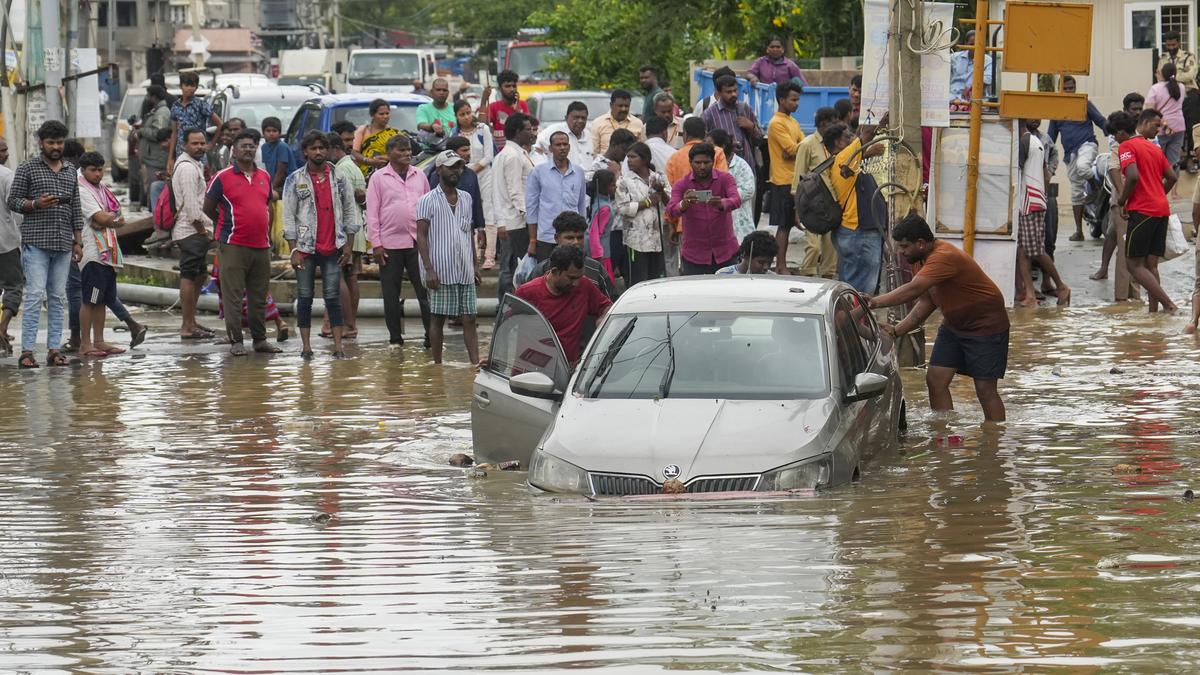Last Updated:
The Stalin-led DMK has expressed concerns that the proposed delimitation will tilt the Lok Sabha numerical strength in favour of north Indian states. Home minister Shah has dismissed such concerns, saying the Narendra Modi government will not allow any unfair treatment to south India
Union home minister Amit Shah (R) and Tamil Nadu chief minister MK Stalin. (File pics/PTI)
Union home minister Amit Shah and Tamil Nadu chief minister MK Stalin have locked horns on the issue of delimitation of parliamentary constituencies. The Stalin-led DMK has expressed concerns that the proposed delimitation will tilt the Lok Sabha numerical strength in favour of north Indian states and penalise south India for family planning measures.
Home minister Shah dismissed such concerns, saying the Narendra Modi government will not allow any unfair treatment to south India. Speaking in Coimbatore, Shah said, “Mr Stalin, the Modi government has made it clear in Lok Sabha that after delimitation, on a pro-rata basis, not a single seat will be reduced in any southern state. And I want to reassure the public of south India that Modi ji has kept your interest in mind to make sure that not even one seat is reduced pro rata.”
DMK MP A Raja dismissed the assurance and asked if the home minister could also assure that the seats of Uttar Pradesh, Madhya Pradesh, and Rajasthan would not go up.
“He offers false assurances that the number of seats will not be reduced on a pro-rata basis. We seek clarification: will it be based on the population census or the existing constituencies of MPs and MLAs?” Raja questioned.
So what is the delimitation furore all about?
The present delimitation of parliamentary constituencies within states has been done on the basis of the 2001 census, under the provisions of the Delimitation Act, 2002. The 84th amendment of the Constitution in 2002 barred delimitation of constituencies till the first census conducted after the year 2026.
This would have ideally meant the census of 2031 since 2021 was when the last census was due.
However, sources pointed to Section 82 of the Constitution, which does not bar census data preceding 2026, to be used for delimitation.
Article 82 refers to the readjustment (of constituencies) after each census.
“Upon the completion of each census, the allocation of seats in the House of the People to the States and the division of each State into territorial constituencies shall be readjusted by such authority and in such manner as Parliament may by law determine,” Article 82 says.
The delayed 2021 census, if held before 2026, can then be used to start the process of delimitation, officials said.
Why was the census delayed?
The 2021 census was delayed first on account of the Covid pandemic and then due to reasons unexplained by the Centre. There is no clarity at the moment as to when the census will be held.
The house listing and enumeration process is usually a year-long exercise. Training of enumerators has to be carried out before the census begins. “Most of our enumerators were trained for the 2021 census. Some have retired, so the new enumerators will have to be trained, which could take a few weeks,” a government functionary said.
The official also said that since the census this time will be done electronically, it will be less time-consuming. However, the budget allocation in 2025 is also being seen as proof of the government remaining indecisive on the census. Budget 2025 allocated Rs 574.80 crore for the census. In 2021, when the decadal census was originally scheduled, Rs 3,768 crore was allocated. The cabinet in December 2019 had estimated that the 2021 census would cost about Rs 8,754 crore. For the next enumeration, officials estimate an expenditure of roughly Rs 12,000 crore.
The caste conundrum
One reason for the delay is the demand for a caste census. The opposition has upped the ante on the issue, which also has the support of BJP allies like the Janata Dal (United). Nitish Kumar, as part of the INDIA bloc, was one of the first chief ministers to undertake caste enumeration. Bihar goes to polls in the last quarter of 2025, and caste is a big factor in the state.
Caste enumeration is also a logistical nightmare for the government. As per the 1931 census, the total number of castes in India was 4,147. In the 2011 census, however, the number had gone up to almost 47 lakh. Government functionaries say that calculating the exact number of OBCs from such a huge sample is an almost impossible task. The challenge before the government is also to verify the caste of people. It is widely accepted that a surname defines one’s caste. But there are examples from Bihar, Punjab, and other parts where this formula is not applicable. “Badals kept their name on the name of their village; Khanna is another example. Punjab is replete with such cases where the surname only signifies the village the person belongs to and not his or her caste. In Bihar, Kumar is used extensively. Two first names or only the first name is also used. Singh, Sinha, and Mishra are used by Bhumihars and also by Rajputs or Brahmins in parts of Bihar and UP. So the name alone can’t reveal what the caste of the person is,” a government functionary explained.
Government officials also pointed out that in the 2011 caste enumeration, almost 11 per cent of people in Maharashtra did not state their caste.
The Bihar caste enumeration asked people to choose from 214 listed castes, but the union government, as per sources, feels that in a pan-India exercise, such a limited list can’t be drawn.
Why the concern then?
BJP functionaries feel DMK is raising the delimitation issue in light of the upcoming Tamil Nadu assembly elections next year.
Political functionaries from southern parties, however, say the concern about delimitation is genuine. In the absence of a census, projected data is being relied upon to fuel the apprehension.
The seat ratio as per projected population shows that while states like UP might see manifold growth in the number of seats, the southern counterparts might gain far less.
UP has 85 Lok Sabha seats currently. The projected population for 2025 is about 25 crore. If the current seat-to-population ratio is implemented post-delimitation, the total number of seats could go up to 250. Whereas Tamil Nadu, which currently has 39 seats, would only go up to 76 if the seat-to-population ratio is implemented. Bihar would go from 59 to 164, while Kerala will only gain 16 seats and go up to 36 from 20.






